Ethics/Data
Ethical Issues in Petra
Animal Issue in Petra
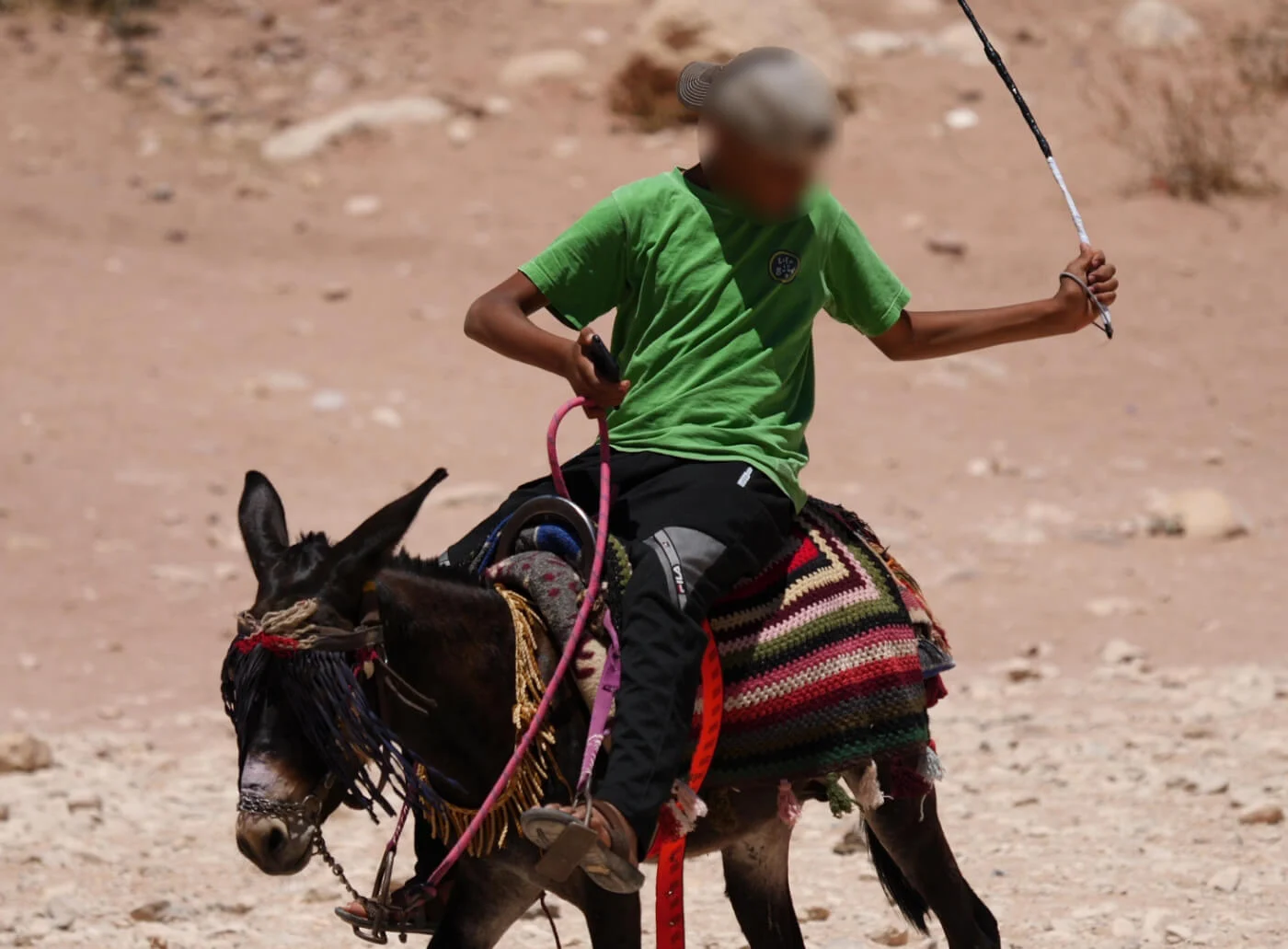
Visitors go to Petra to marvel at its ancient monuments and temples, yet the "Lost City" has a dark and ugly side: More than 1,300 horses, donkeys, and camels are forced to carry tourists or pull carriages in the city every day, and they are suffering terribly.
Handlers routinely whip and beat the animals, even hitting them in the head with rocks, as they haul tourists on a grueling 6.2-mile trek in the sweltering heat, and there's no water or shade for them. Donkeys are forced to carry people up and down the 900 treacherously steep and eroded stone steps to the city's monastery. If they resist or falter, the beatings often intensify.
Donkeys have fallen over the edge, and young people have deliberately pushed them over. Authorities' lack of interest in helping these animals is blatant: Indignant tourists are directed by the Petra Development and Tourism Region Authority to report cruelty to animals by sending a message to an e-mail address that doesn't even work. Our meetings with the government have resulted in absolutely no changes, and it doesn't help us with our initiatives.
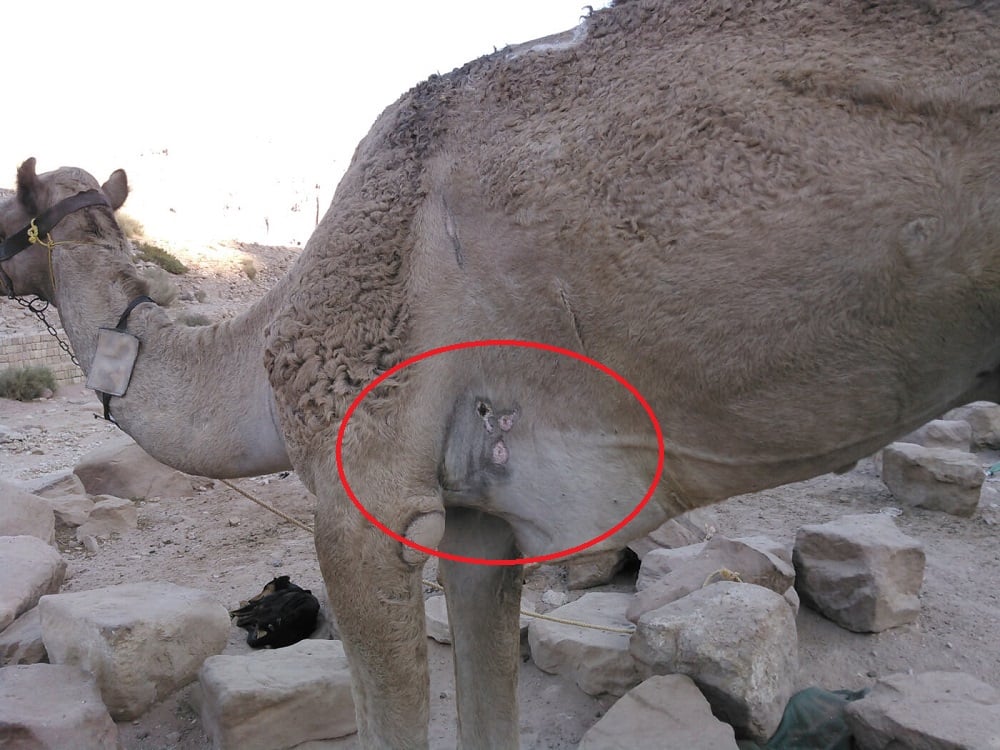
Excavation Issue in Petra

The damage caused by looting is nothing new and some of the more iconic buildings at Petra bear witness to this. A giant urn carved above the entrance to the Monastery bears the marks of hundreds of gunshots. The local Bedouin tribesmen living in and among the ancient ruins say the damage was caused when local men would open fire with rifles, seeking the loot thought to be inside the urn which is actually made of solid stone.
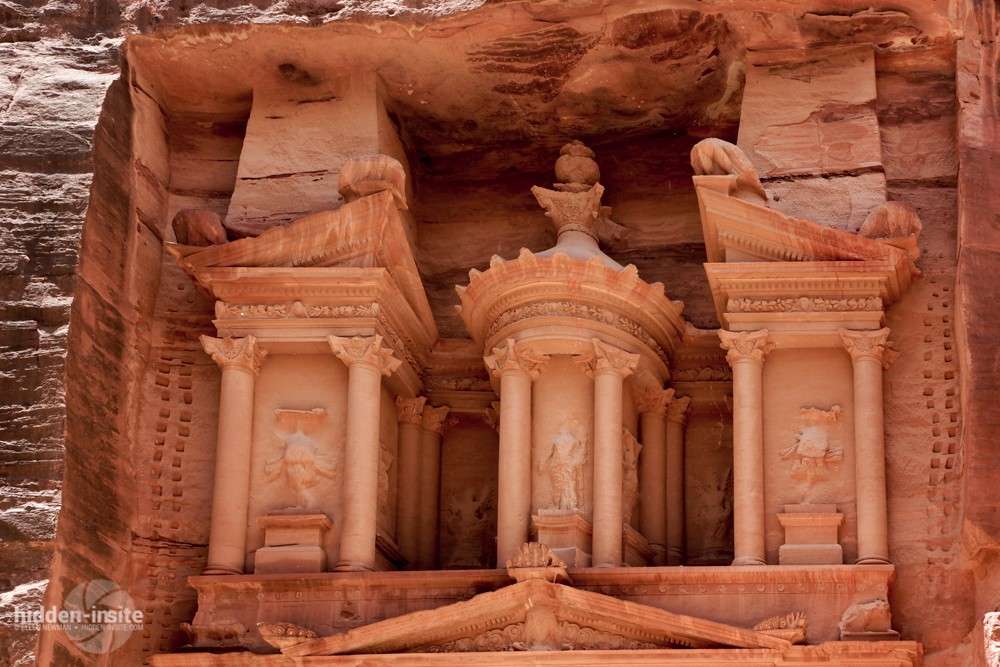
Data from Petra
Coin Data
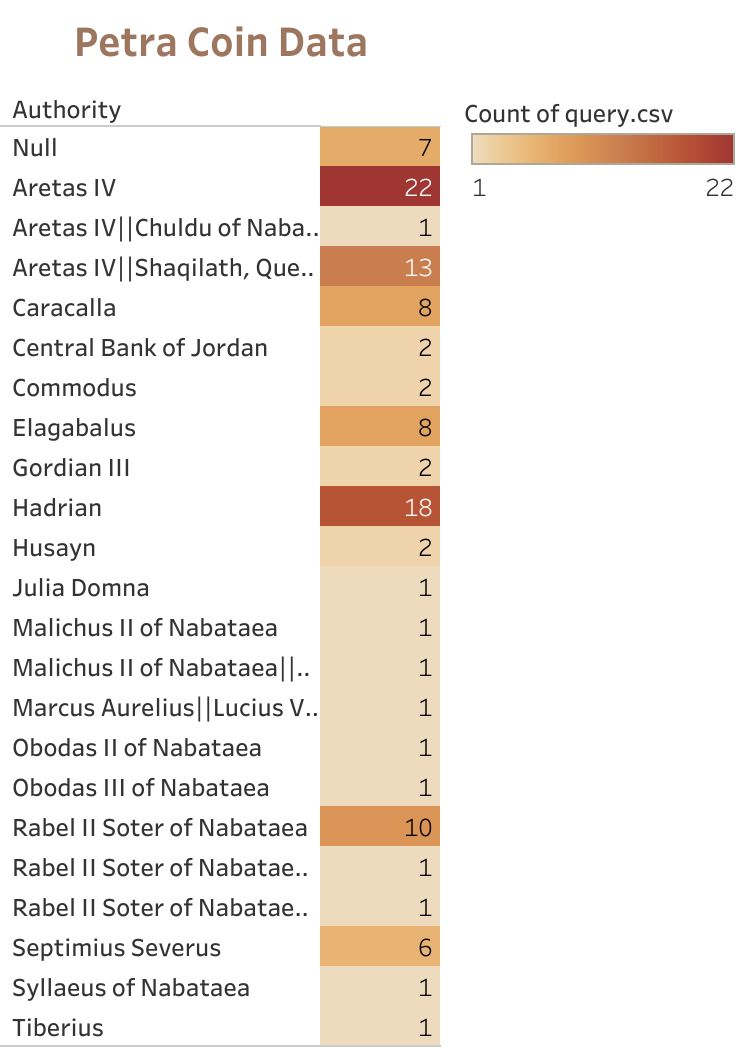
This dataset made through open context and tableau showcases the Coins found in Petra. They are separated by the ruler or authority figure at the time. If you look at the names you may notice some names aren’t from Petra, for example Hadrian. Harian was a Roman ruler best known for his literary pursuits, his substantial building projects throughout the Roman Empire, and, especially, Hadrian's Wall in northern Britain. The Byzantine Empire also left its mark on Petra. Coins from the Byzantine period may be discovered, reflecting the continued existence and transformation of the city during this era. The Nabateans were influenced by many other civilizations around them. The Nabataeans minted their own coins, often featuring images of their rulers, deities, and symbols representing their culture. These coins can be found in archaeological excavations in and around Petra.
Pottery of Petra
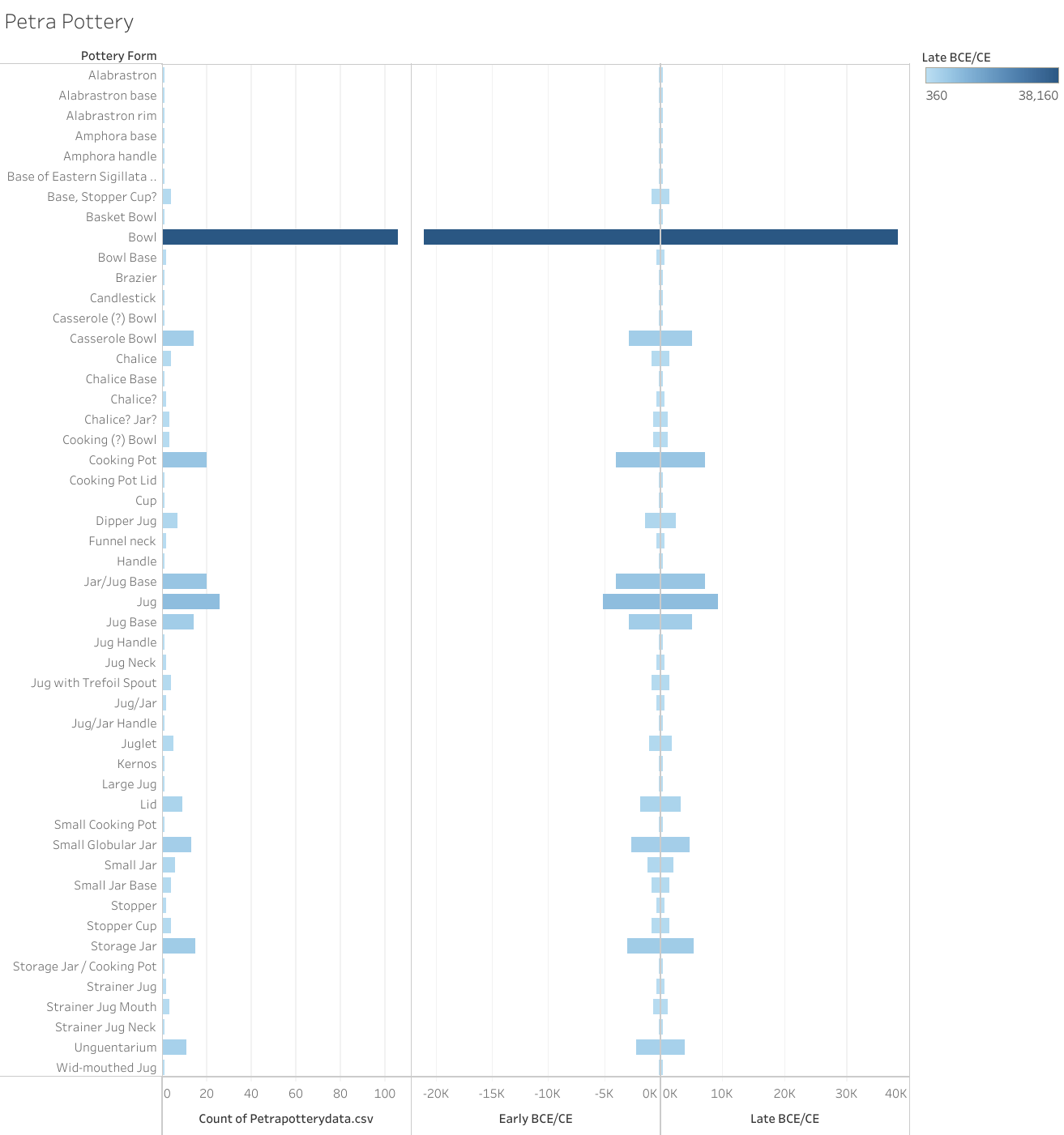
Bases off the data pulled from Open context you can see the different pottery forms that wrere found in Petra. In the graph you can see that Bowls were the most found ceramic object and a jugs following in second. Also by looking at the bottom axia you can see that it has seperated the objects by when they were believed to be made. Archaeologists use various different methods to date ceramic objects, depending on the archaeological context and the characteristics of the ceramics in question. Stratigraphy, examining the layers of soil in which artifacts are found, provides a relative chronology based on the principle that deeper layers contain older materials. Stylistic analysis involves studying the artistic features of ceramics to discern cultural periods, while seriation arranges artifacts based on shared stylistic traits. Chemical analysis, including the examination of composition and mineral content, can link ceramics to specific sources or production techniques. Thermoluminescence dating measures the accumulated radiation-induced energy in ceramics, offering a time estimate since their last firing. Radiocarbon dating and dendrochronology may be applied if ceramics are associated with organic materials or tree rings. Archaeologists often integrate these methods to establish a comprehensive understanding of the chronological development of a site or artifact collection.





